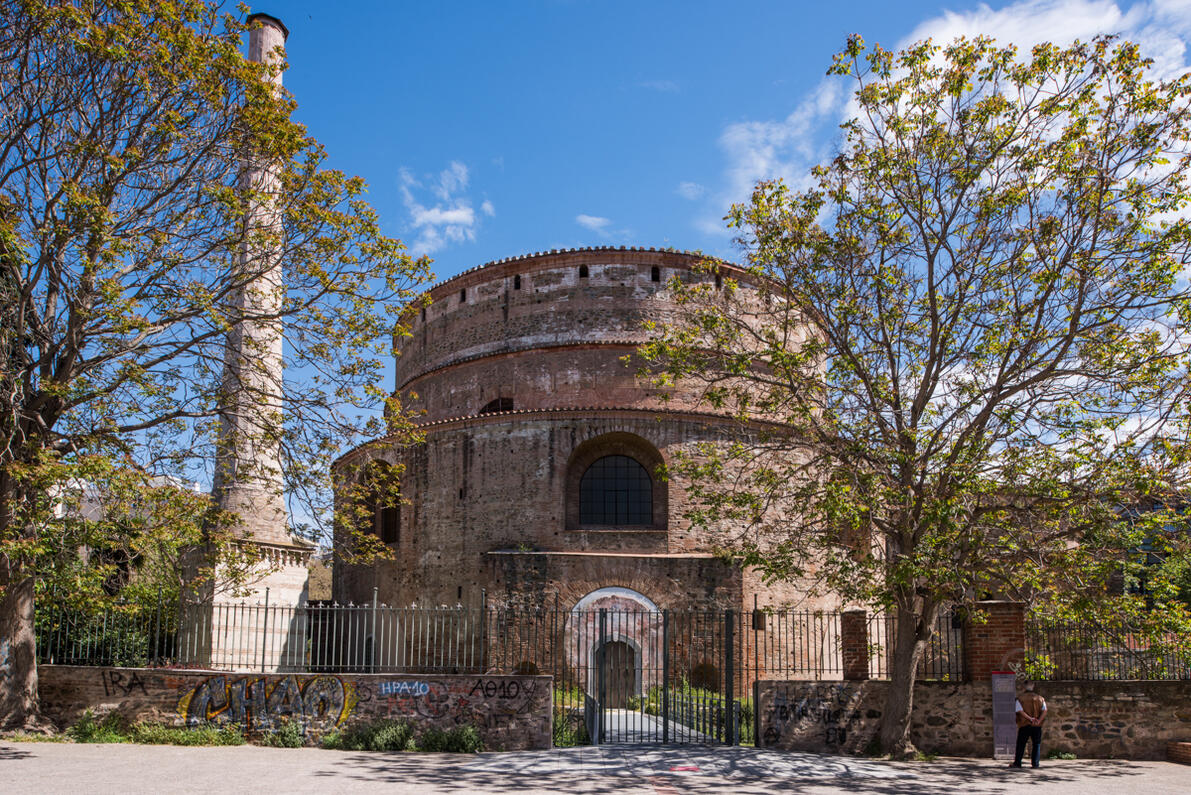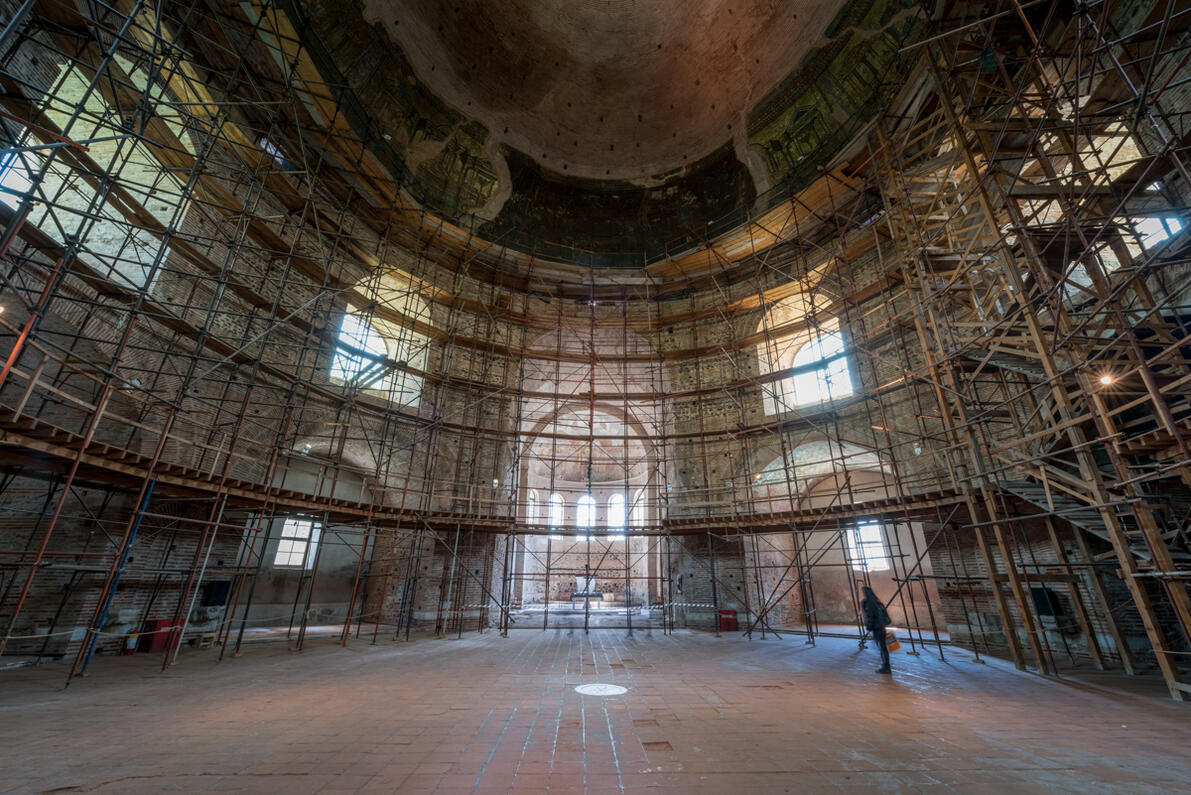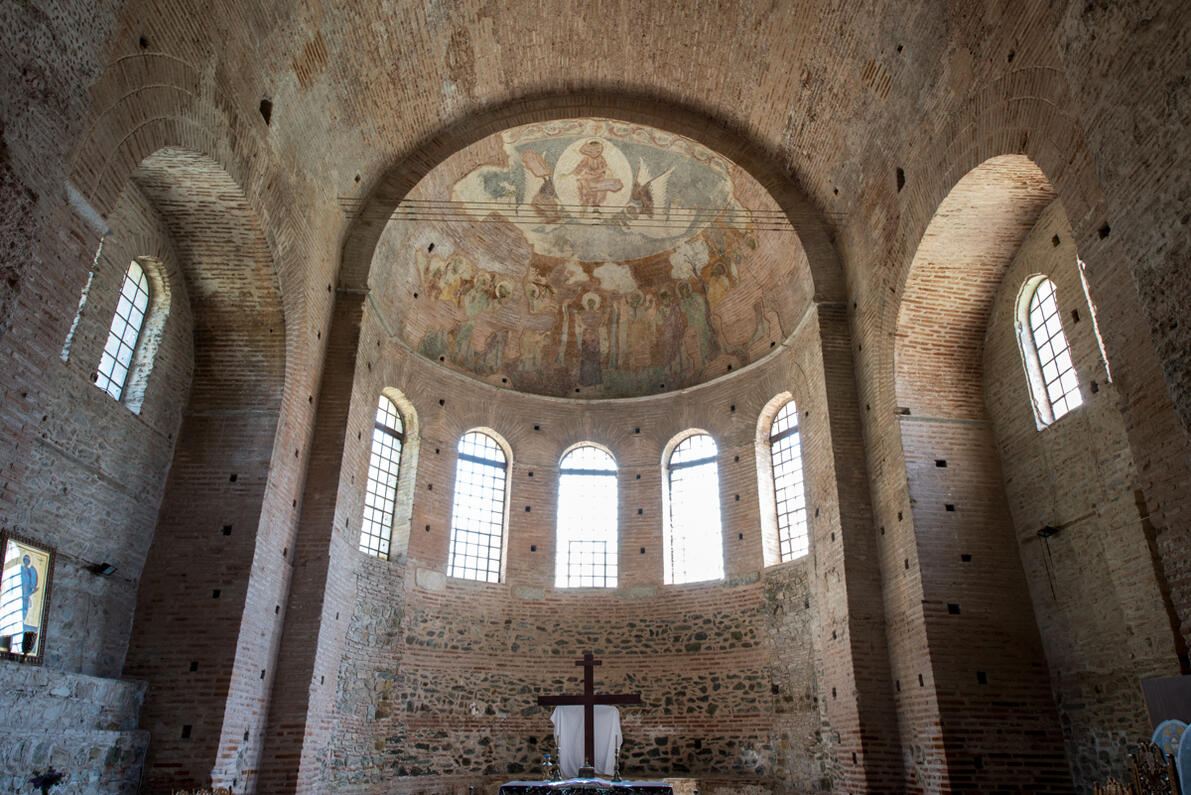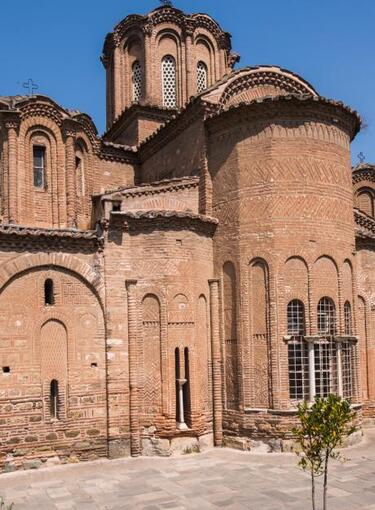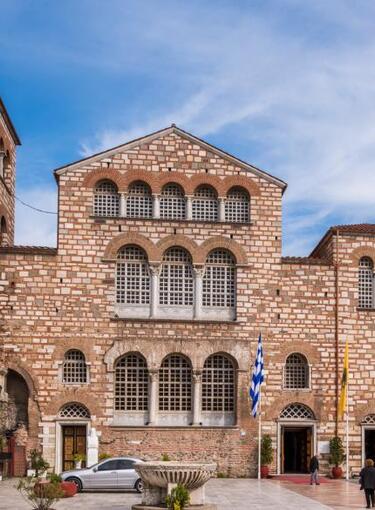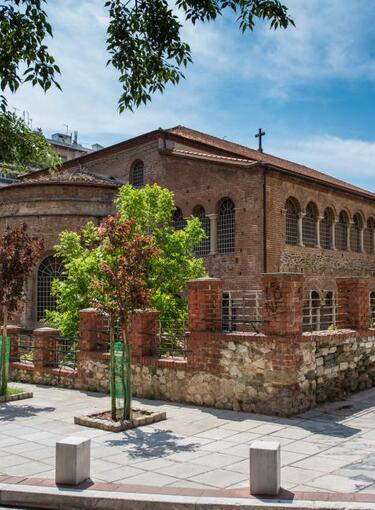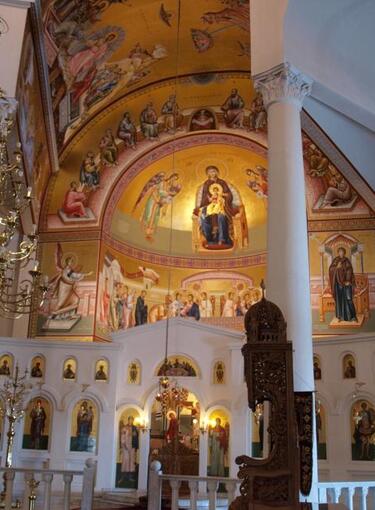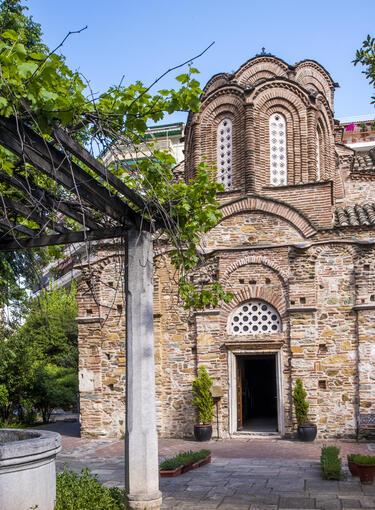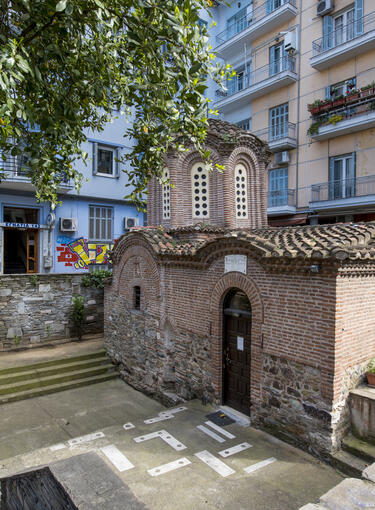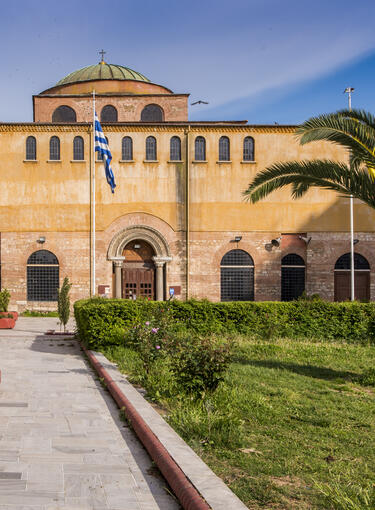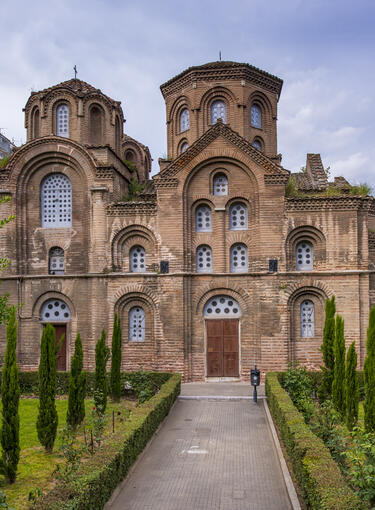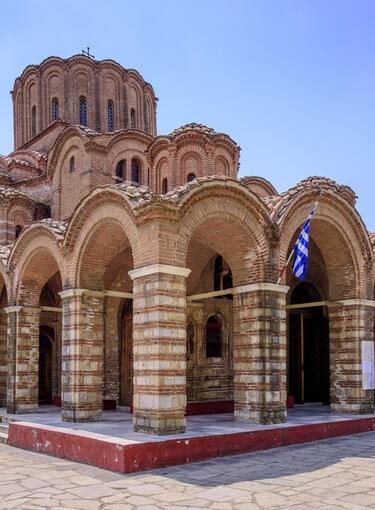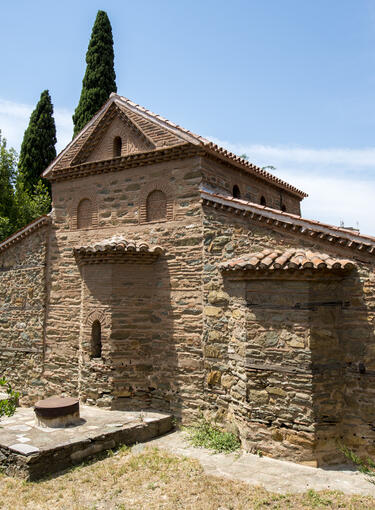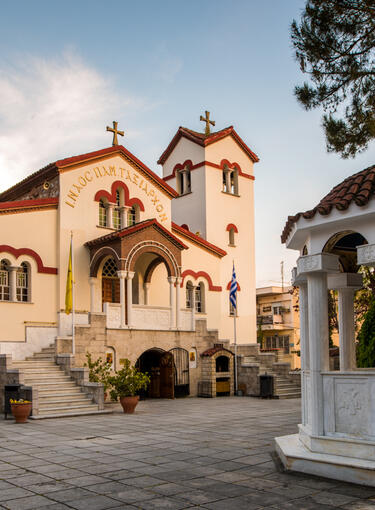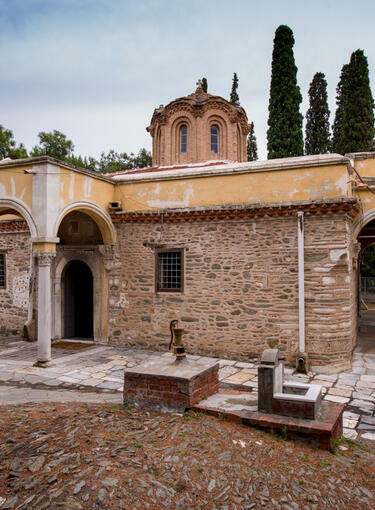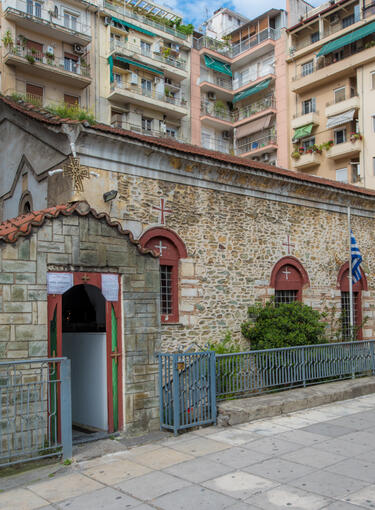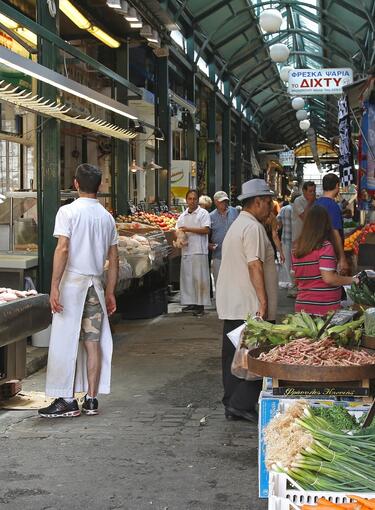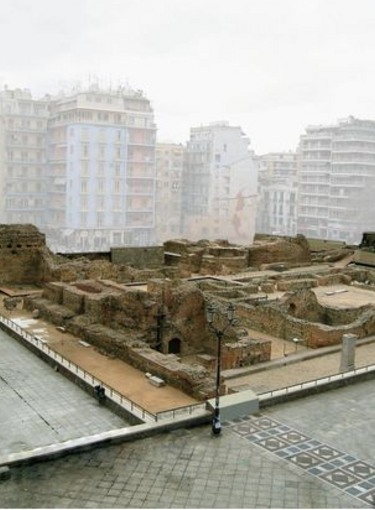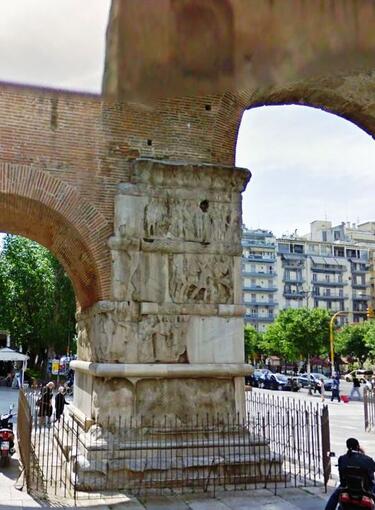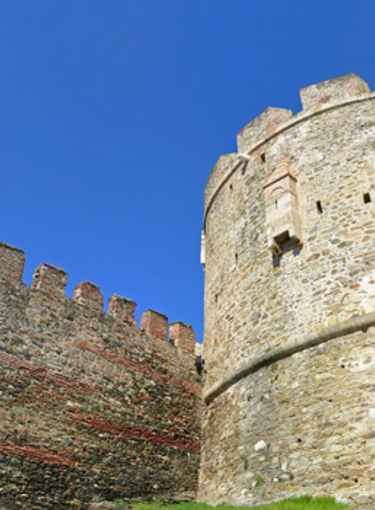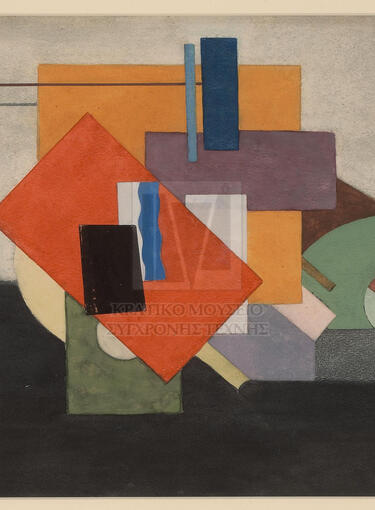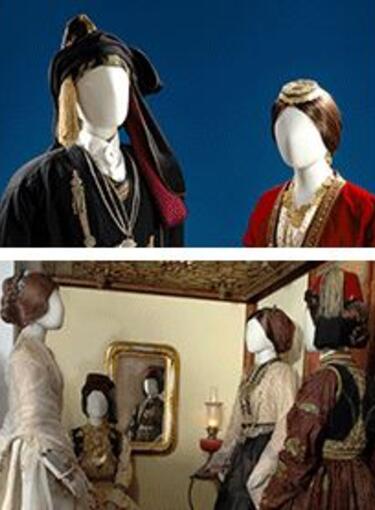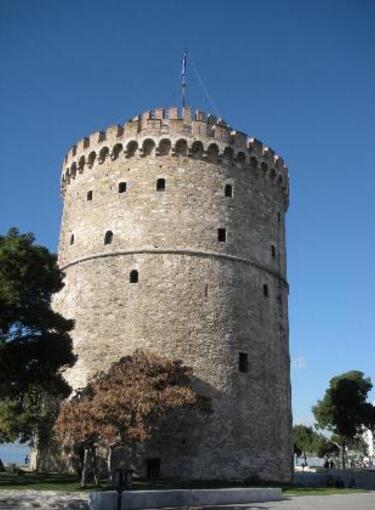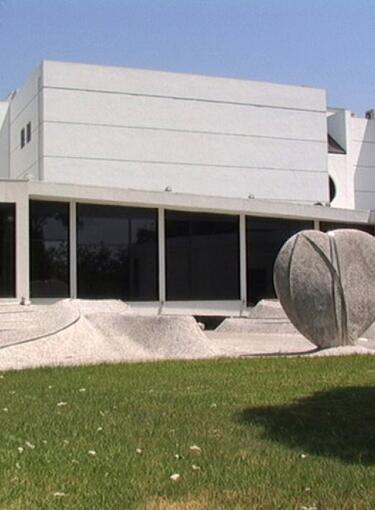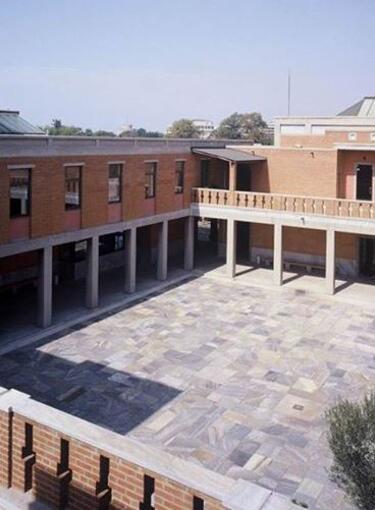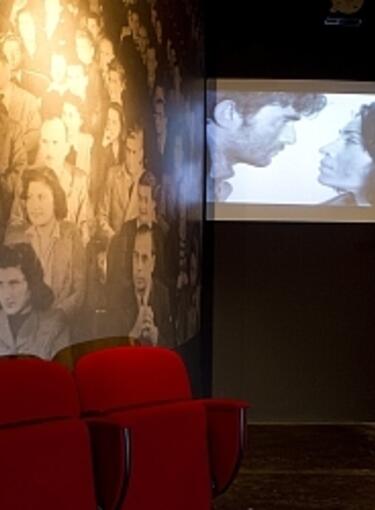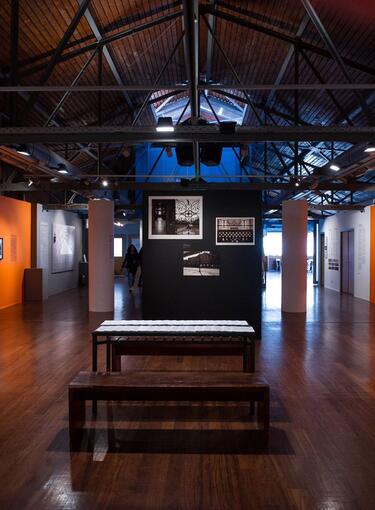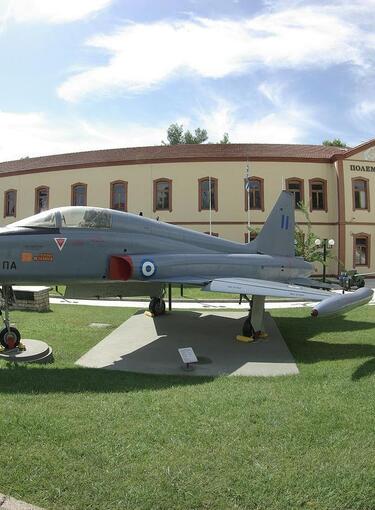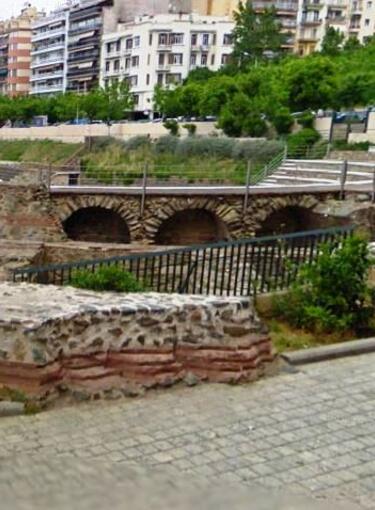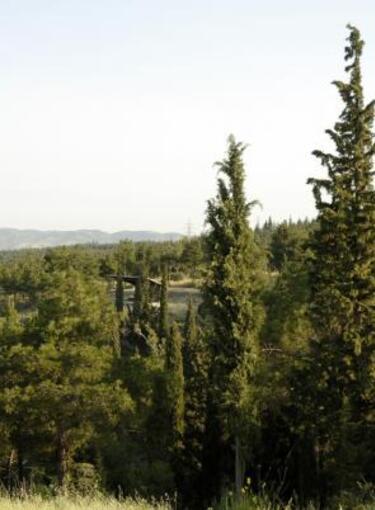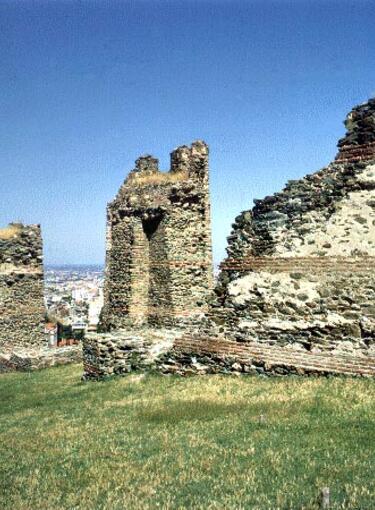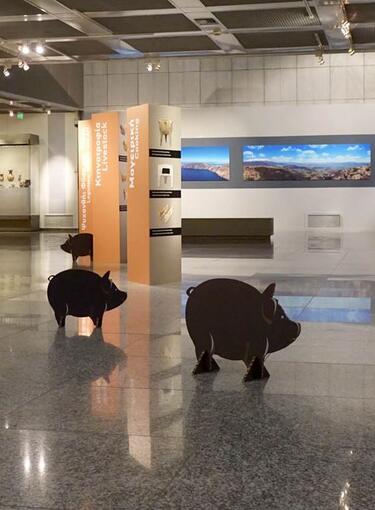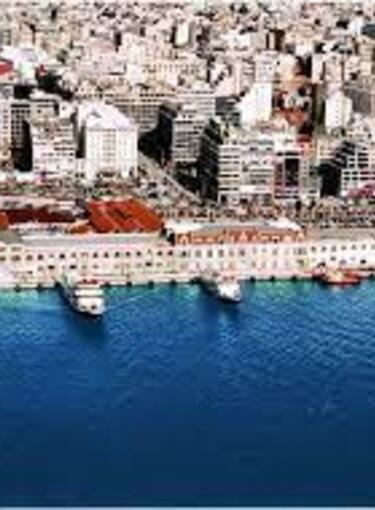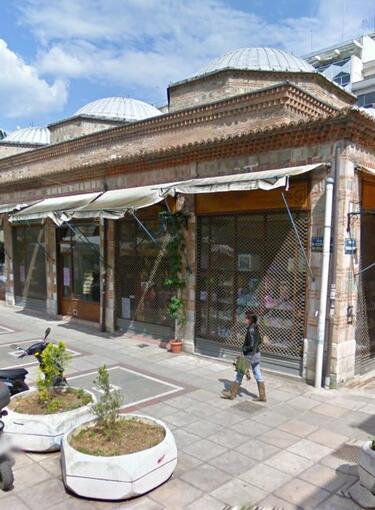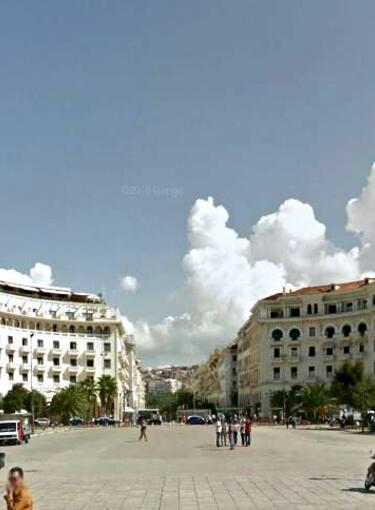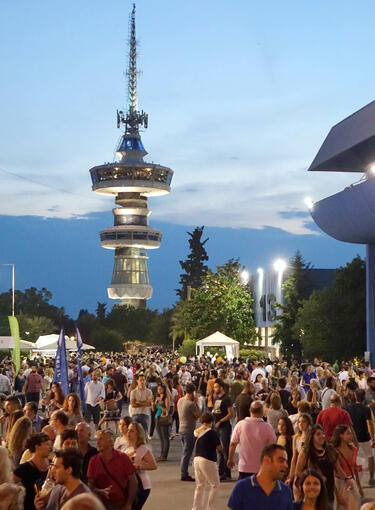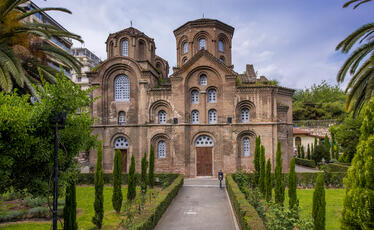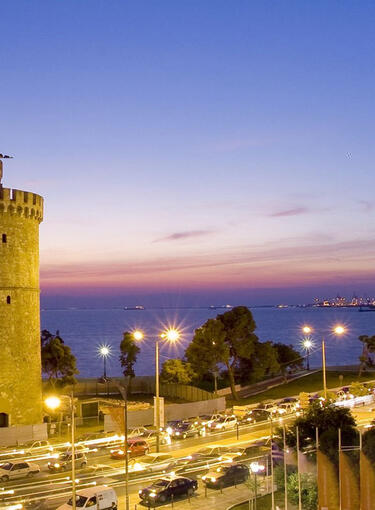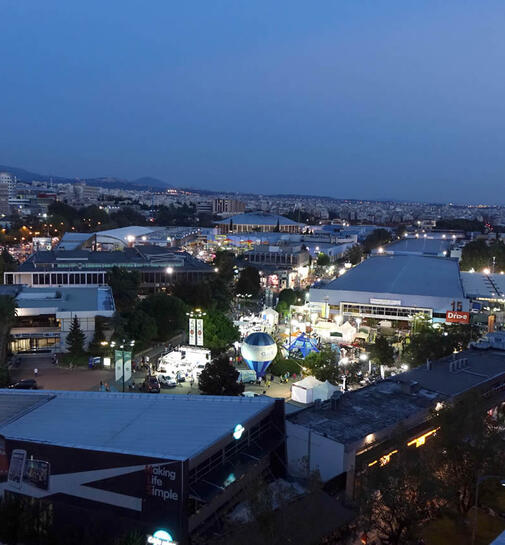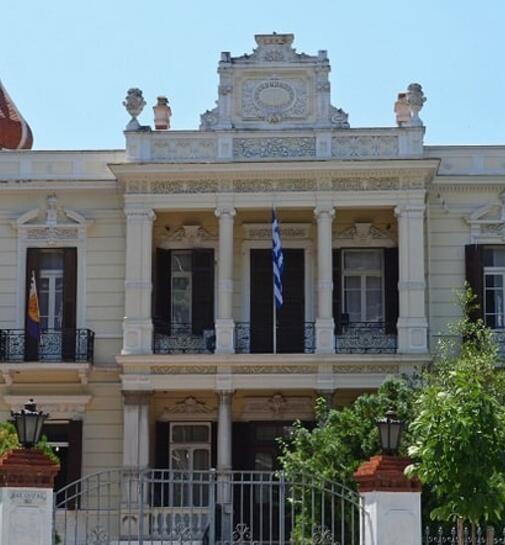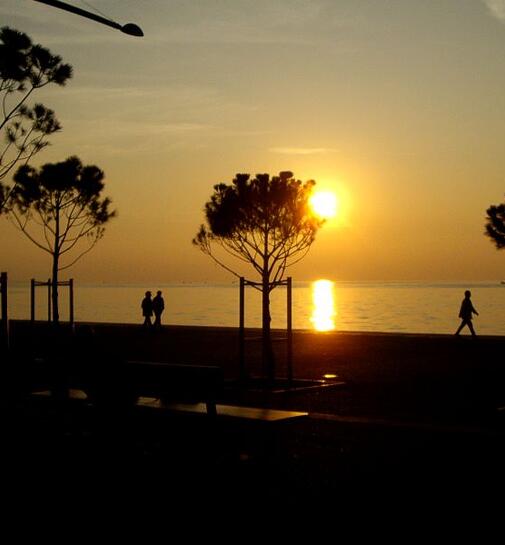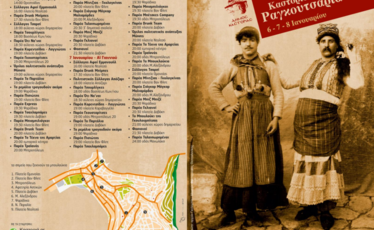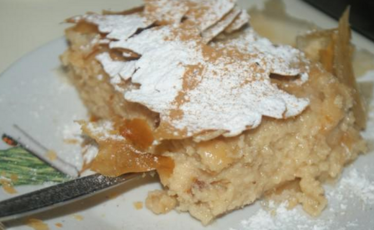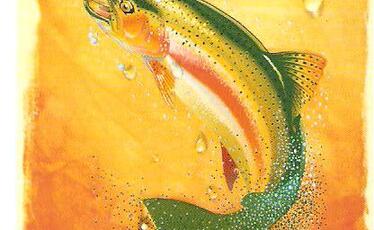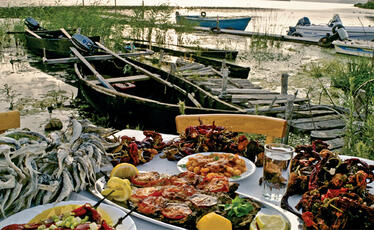The church of Agios Georgios, known as Rotunda, is located on the eastern part of the historical centre of Thessaloniki. The visitor encounters if over the Kamara, which walking along D. Gounaris street.
The name Rotunda came from its round shape. It is one of the oldest and more impressive monuments in Thessaloniki, which depicts all the historical stages of the city. It was built in the years of Caesar Galerius (250-311 AD) and it was part of the imperial complex while a characteristic that remained the same in all historic periods was its use as a sacred area.
The circular building, with a diameter of 24m, is roofed by a dome with a height of 30m. The cylinder wall is 6,30m thick and is divided in its interior into eight rectangular conches, from which the southern one was the main entrance.
Initially it was a sanctuary of the Cabeiri, chthonic deities, or of Zeus, protector of Diocletian and Galerius. In the past it was believed that it might have been the tomb of Galerius, a view that has been abandoned, since his mausoleum was found in Romuliana, in Serbia.
During the years of early Christianity, around the middle of the 5th century, the Rotunda was converted into a church dedicated to the Archangels, while it took its present day name (Church of Agios Georgios) from a nearby chapel of Agios Georgios.
During the Ottoman Period (1430-1912) and more specifically from 1525-1590, it functioned as a metropolitan church, under the name Old Metropolis, Eski Metropol, as it is mentioned in Turkish sources. Then (1590-1591) it was converted into a mosque named Hortaci Süleyman Efendi Camii. When Thessaloniki was liberated in 1912 and until 1920 it was used again as a place for Christians. The earthquake in Thessaloniki in 1978 caused serious damages to the church and important restoration works were made. Today the church of Agios Georgios, the Rotunda, is one of the most important archaeological sites of the city.
In spite of the continuous changes in its use, the monument always kept its circular shape. In the 5th century, in order to use the monument as a church, they added an arch on the east and created the altar. On the western side they added the narthex with the new entrance.
Of particular interest are the mosaics, of exceptional quality, which are considered the most beautiful of the early Christian years. From the decoration of the dome that still survives we understand that it depicts Christ’s Second Coming. Better preserved on the lower part are the saints, who are in front of an architectural setting. At the arches of the conches various decorative themes can be seen.
At the altar’s conch there is a wall painting of the Ascension of Christ that dates from the second half of the 9th century.
Finally, the interventions that were made during the Ottoman period are obvious (minaret and fountain on the western side), a period when the monument was used as a mosque.
Informations
Additional
Date:
4th century
Season:
Early Christian
Holy Metropolis:
Thessaloniki
Under the Supervision of:
Archaeological Service of the city of Thessaloniki
Access:
Car
Parking:
Free


